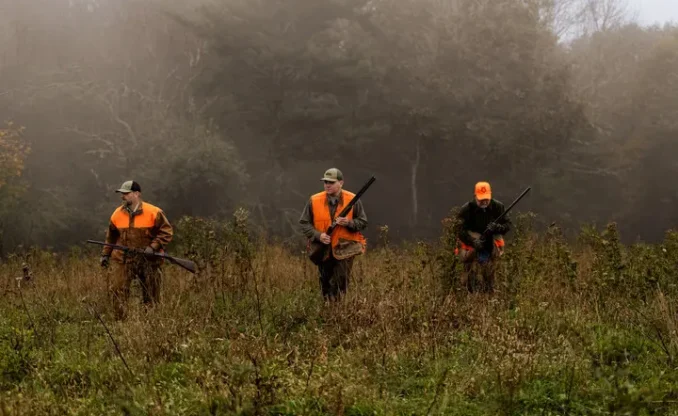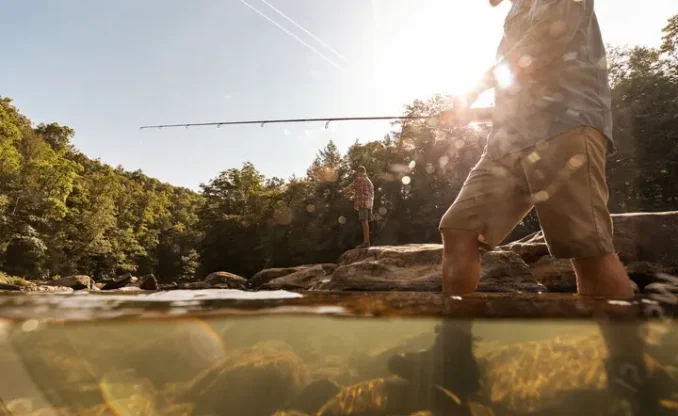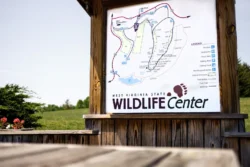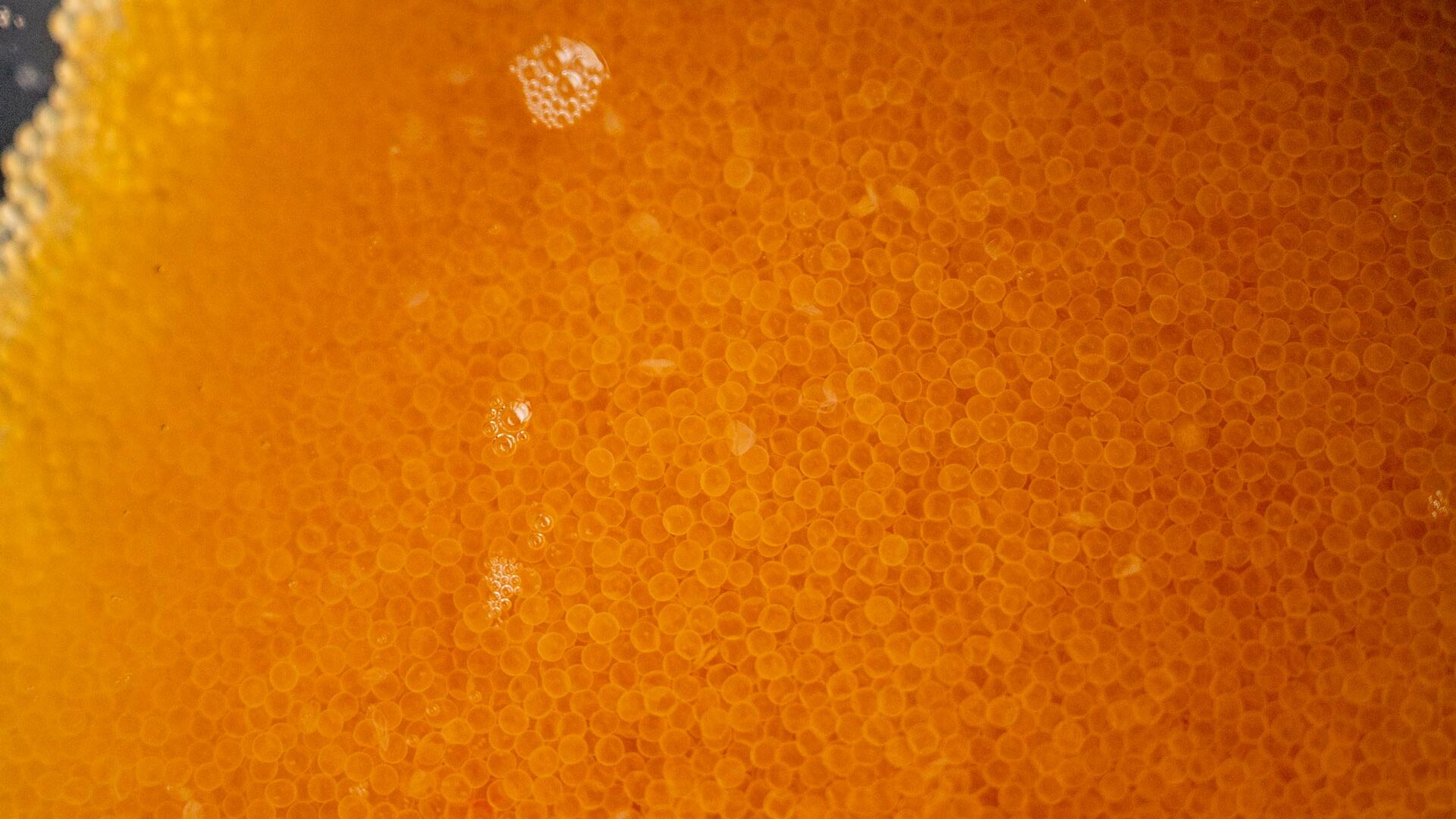How the WVDNR’s Hatchery Program is Shaping the Future of Musky Fishing
Muskellunge, often called musky, are known among anglers as the “fish of 10,000 casts.” These powerful, elusive predators are a bucket-list catch for many anglers and an iconic part of West Virginia’s freshwater fisheries. But what many don’t see is the behind-the-scenes work done by WVDNR fisheries biologists to ensure West Virginia musky continue to thrive across the Mountain State. In this blog, we’ll take you inside the WVDNR’s musky spawning program to see how biologists collect, spawn and raise this remarkable fish, and why it matters for conservation and anglers alike.
Watch a video summary below and keep reading to learn more!
West Virginia Musky: A Premier Predator
Muskellunge are considered by many anglers to be the premier freshwater sport fish. Their large size, explosive strikes and solitary, ambush-driven behavior make them one of the most sought-after catches in North America. In West Virginia, they’re native to the Ohio River drainage, but WVDNR stocking has expanded their range across the state.
Musky are long, cylindrical fish with a sharp snout, razor-like teeth, and a pattern of spots and bars over a base of olive, brown, or titanium-white coloring. These features make them nearly invisible to prey they are pursuing. As top-level predators, they prefer slack water, downed timber, and other ambush-friendly habitat, using a coil-and-spring strike to capture prey such as suckers, shad, and even small birds and mammals.
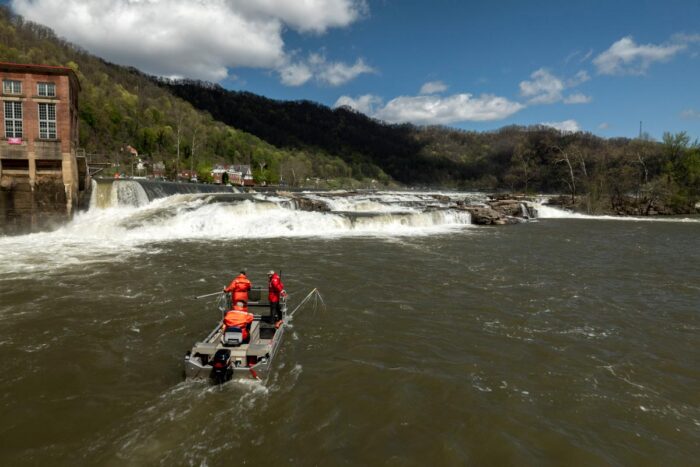


Spring Spawning: Collecting Musky Brood Stock
Despite their fearsome reputation, muskellunge are vulnerable to habitat loss and water quality degradation like many other fishes. To counter these problems, the WVDNR is involved in conservation efforts to maintain and enhance current populations so anglers have more opportunities than ever to chase these legendary predators.
One such effort is the WVDNR’s musky spawning program. Spring temperatures trigger musky courtship behavior and movement, giving WVDNR fisheries biologists the rare opportunity to locate and collect wild brood stock.
In late March and early April, WVDNR fisheries biologists took to the water to collect fish for the project, using specialized electrofishing equipment. The team targeted Elk River, Middle Island Creek, Kanawha River, New River, and North Bend Lake to capture male and female musky to bring back to the WVDNR’s Palestine and Apple Grove State Fish Hatcheries for spawning. But not every fish can make the cut. Biologists must carefully select healthy, sexually mature adult fish to support the hatchery program.
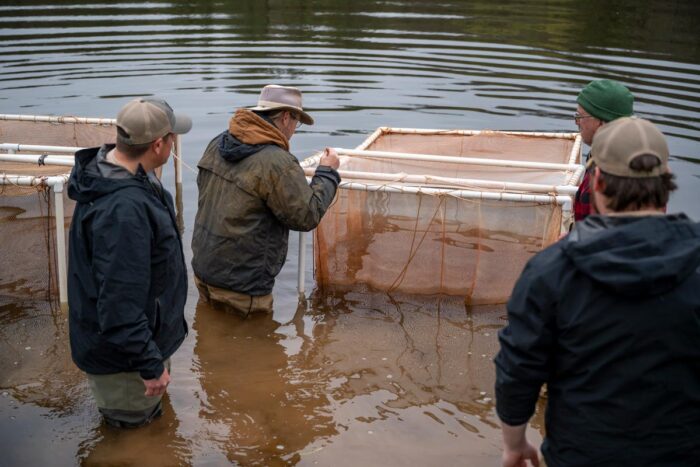
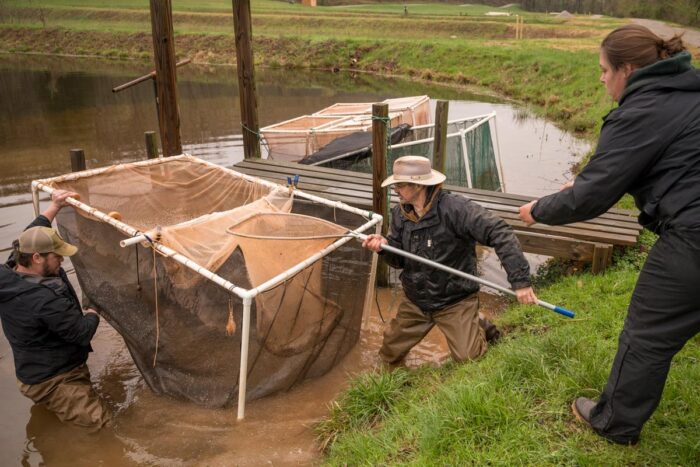
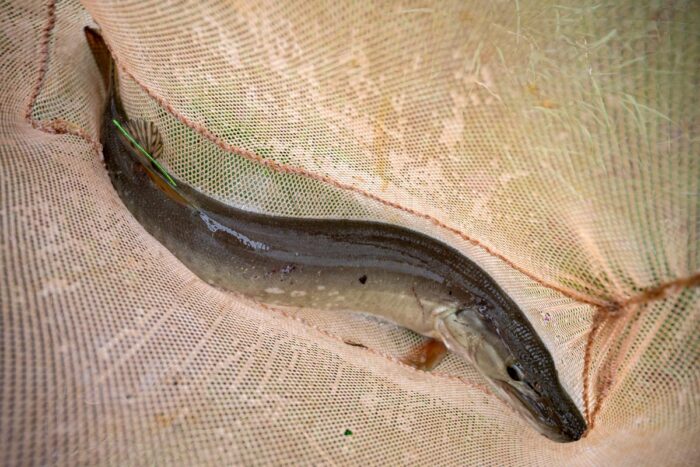
Inducing Musky Spawning at the Hatchery
Musky spawning in the wild typically begins when water temperatures reach 50-55°F, and often involves large-scale migrations that congregate males and females for courtship. At the hatchery, musky are safely held in mesh cages. Biologists then induce the spawning process by injecting females with common carp pituitary gland extract that stimulates eggs to be released approximately 72 hours after injection.
Eggs are collected from female muskies and mixed with milt collected from male muskies—a delicate process that requires precision and care. After fertilization, the eggs are transferred to flow jars where they are aerated until they hatch.

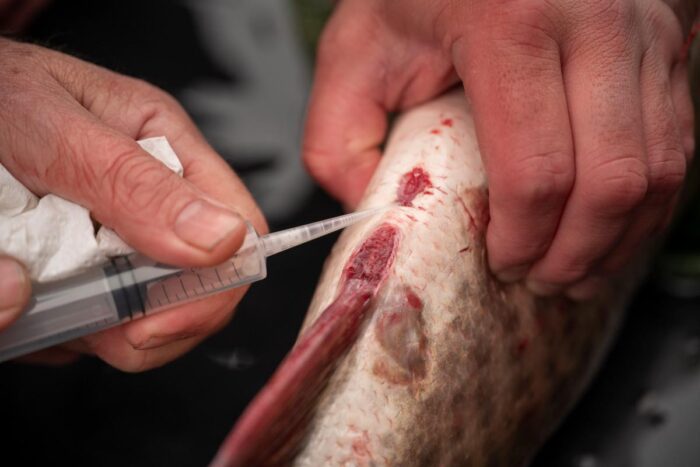
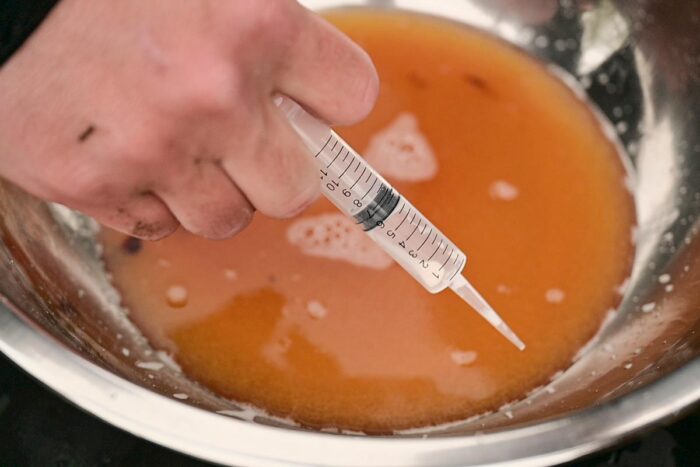
Raising and Stocking Musky
After a few weeks of feeding on brine shrimp, musky fry are moved to hatchery ponds to grow. Musky are raised at the hatchery through the summer and fall until they reach advanced fingerling size (10+ inches), and they are stocked in waters throughout West Virginia from late October through early November. These stocked fish maintain stable population sizes in both native and expanded ranges where natural reproduction is not capable of sustaining a fishery.
Nate Taylor, a fisheries biologist for WVDNR District 6, states “It’s extremely rewarding to be a part of a program focused on the enhancement of musky fishing opportunities for the anglers of West Virginia.”
Musky anglers are passionate about the future of West Virginia’s musky populations and fishing opportunities. Many are active in sportsman’s groups that have worked to promote their sport through the donation of equipment that supports the WVDNR’s musky stocking program.
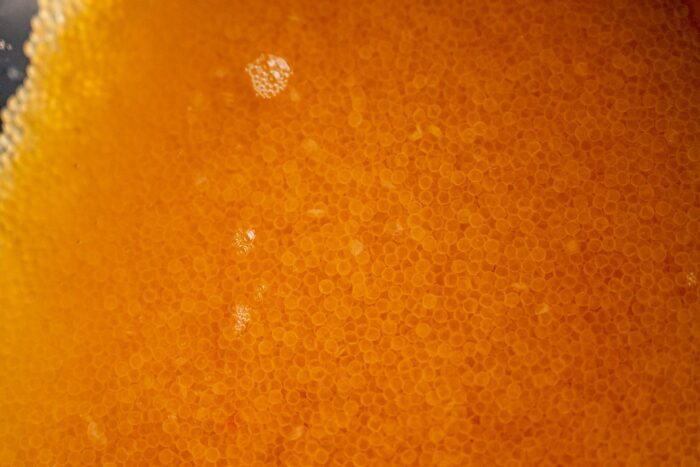
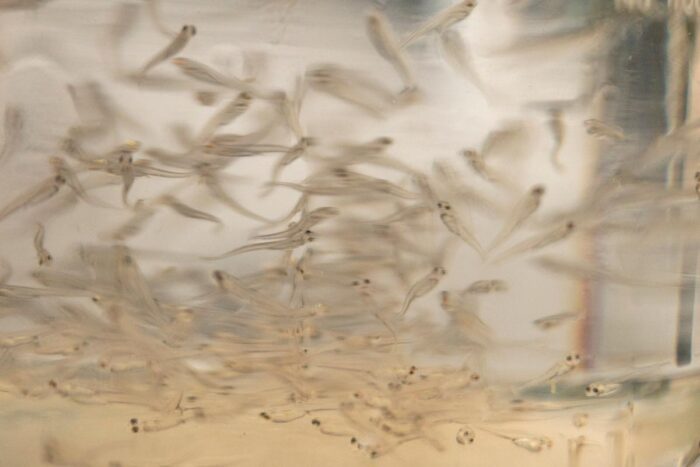

Why Musky Management Matters
Muskies have a reputation for being difficult to catch, which has earned them the nickname “the fish of 10,000 casts.” Their solitary nature, preference for large territory and selective feeding habits make them a challenge even for seasoned anglers. Yet thanks to the WVDNR’s management efforts, West Virginia anglers have seen more frequent encounters with these apex predators.
“The quality of fishing in West Virginia today is really a testament to the WVDNR’s hatchery program,” said Taylor. “When it comes to catching musky now, I believe our work has made them probably more like the fish of 1,000 casts.”
With strong musky populations and targeted management, West Virginia has become a destination for serious anglers. “I think we’re really at a peak time as far as the quality of musky fishing in the state of West Virginia is considered.”
Musky are also part of the WVDNR’s Master Angler Program. Anglers who catch a musky at least 30 inches long and complete all six “slams” — each requiring specific fish species to be caught within a calendar year — can qualify to become a West Virginia Master Angler. Want to find musky waters near you? Check out our interactive online fishing map at mapwv.gov/huntfish.
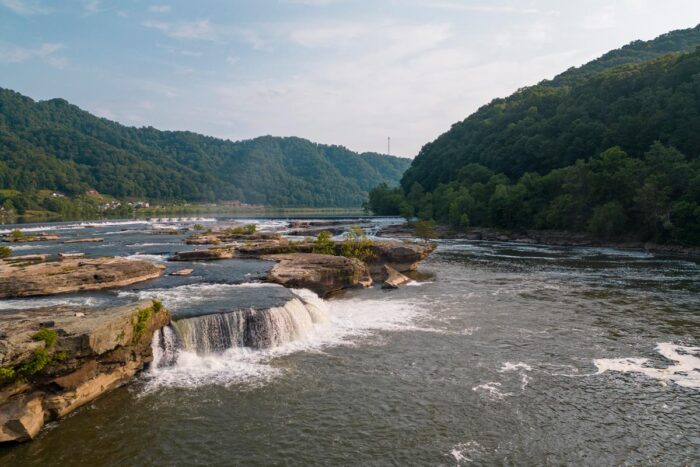
Buy Your West Virginia Fishing License and Support Musky Conservation
The musky spawning program is just one example of how the WVDNR works behind the scenes to support world-class fishing. You can support these efforts by purchasing a West Virginia fishing license and taking on the challenge of catching the iconic musky. Buy your license today and get ready to cast often. Who knows — you might just reel in the fish of 10,000 casts in 1,000!

